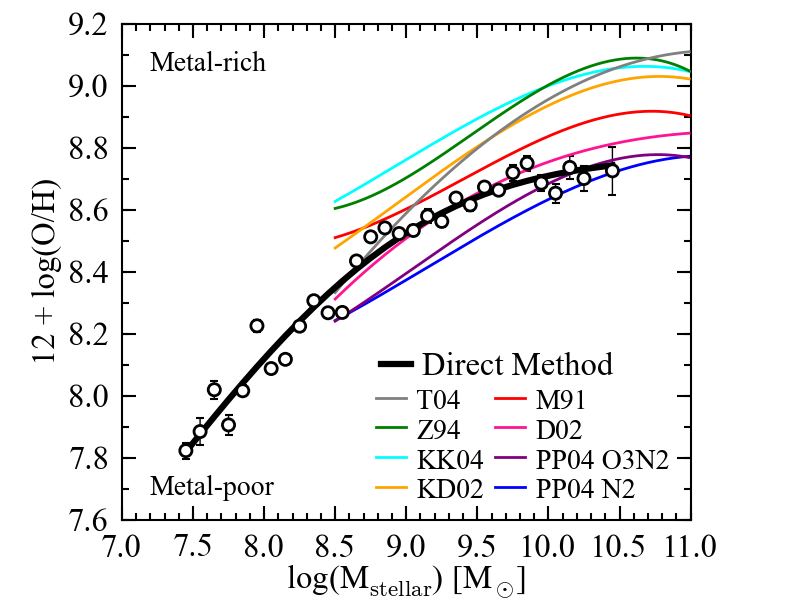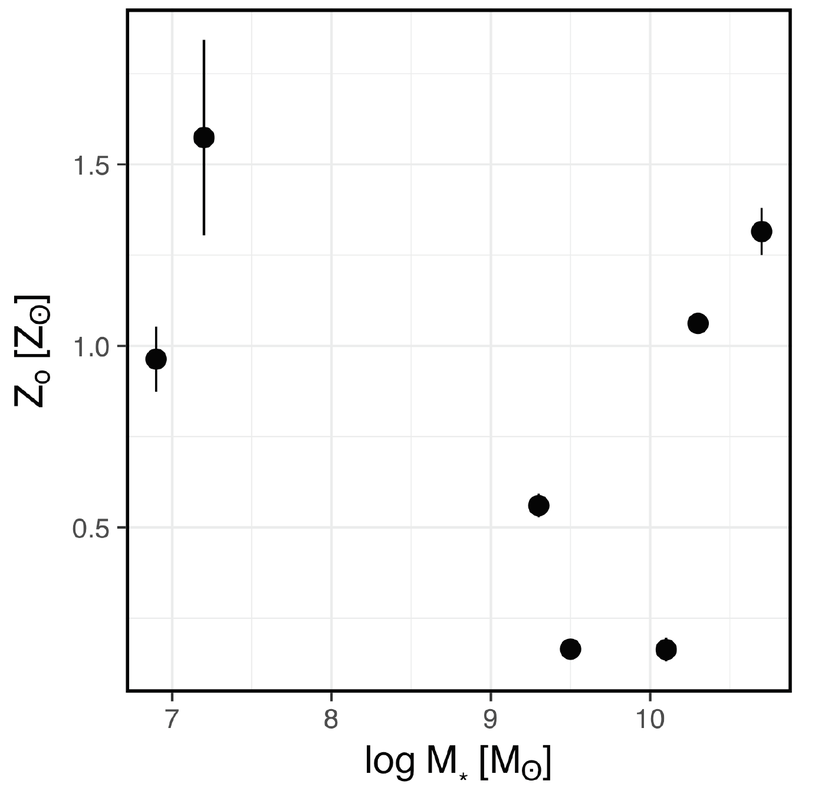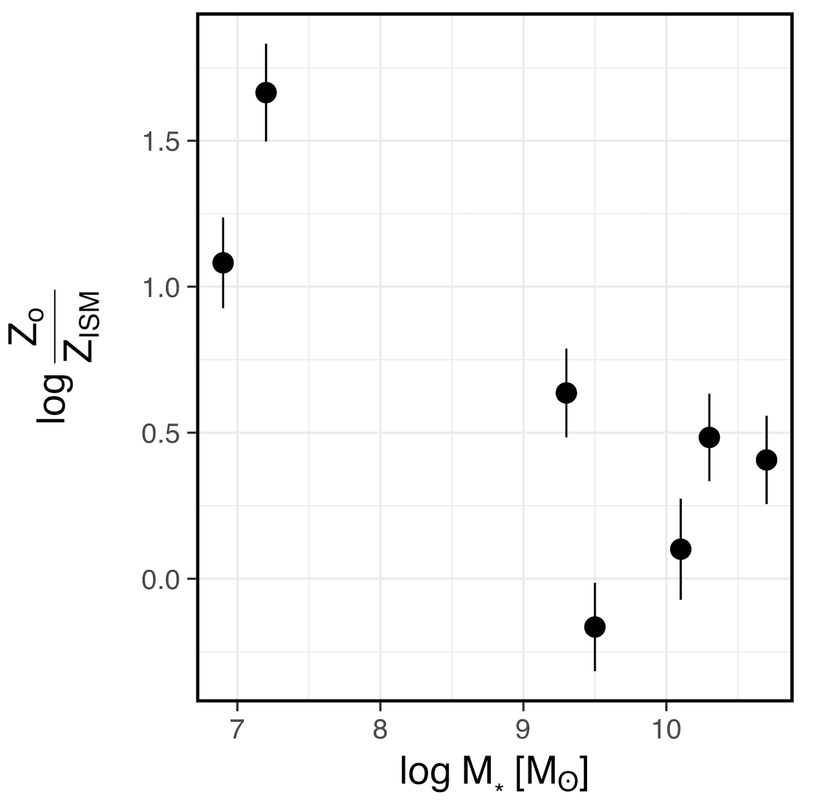Metal-Enriched Galactic Outflows Shape the Mass-Metallicity Relation
The host properties of galaxies are highly correlated. Perhaps the most studied relationship is the stellar mass gas-phase metallicity relationship (MZR; see the figure below). This relationship is widely acknowledge as proof that physical processes control the build-up and chemical enrichment of galaxies. In particular, galactic outflows are thought to remove metal-enriched gas from low-mass galaxies, preferentially decreasing their metallicity and creating the MZR. Galactic outflows are often thought to expel metal-enriched gas, but there has not been a systematic study of the outflow metallicity. Recently, I submitted a paper that used the observed column densities from galactic outflows and photo-ionization models to determine the metallicity of galactic outflows in the nearby universe and how these metal outflows shape the mass-metallicity relationship. The paper can be found here, but below I have summarized the key points and plots.
The outflow metallicity does not vary with stellar mass
|
The observed metallicities of galactic outflows do not scale with stellar mass. In fact, the seven galaxies in our sample have outflow metallicities that scatter about solar metallicity (with a quite a bit of scatter; see to the right). Strangely, this suggests that the outflow metallicity is invariant with stellar mass.
|
GAlactic outflows are metal-enriched
The metal outflow rate shallowly increases with stellar mass
|
The rate that outflows remove metals determines whether outflows can decrease the metallicity of galaxies sufficiently to create the MZR. I find that the metal outflow rate scales shallowly with increasing stellar mass (plot to the right). This means that outflows from high-mass galaxies eject more metals than low-mass galaxies, but the shallow relation means that outflows from high-mass galaxies are much less efficient at removing metals than low-mass galaxies.
Importantly, since the outflow metallicity does not scale with stellar mass, all of this scaling arises from the mass outflow rate (see here). Relatively fewer metals are ejected from high-mass galaxies because the gravitational potential is much stronger in these galaxies and the supernova energy removes fewer metals. This implies that at high stellar masses the metal outflow rate becomes smaller than the star formation rate and galaxies retain most of their metals. This flattens the MZR at large stellar mass. |
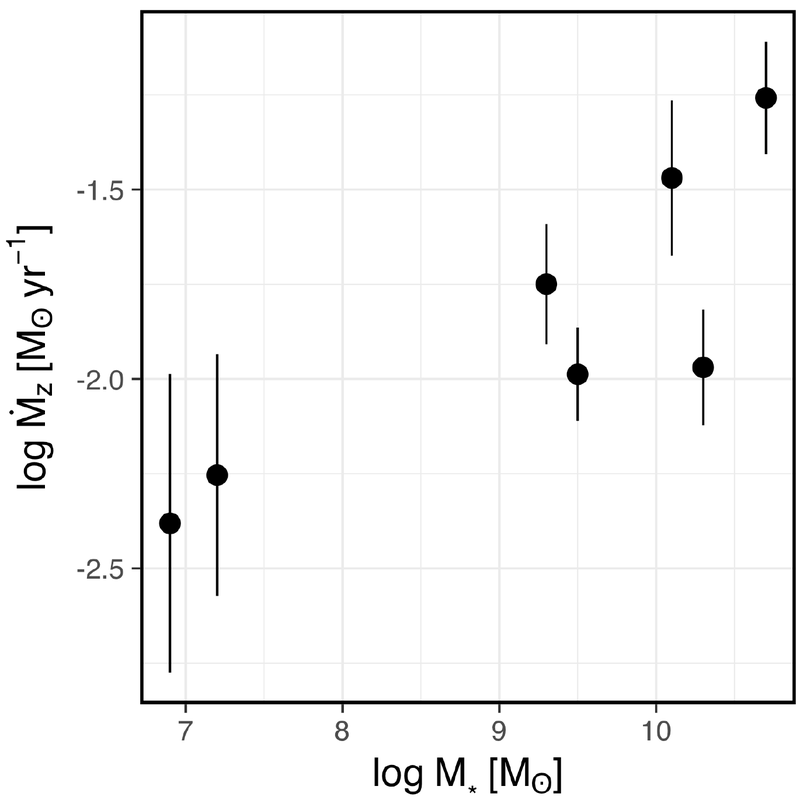
The metal outflow rate versus the stellar mass of the galaxy. The rate that metals are removed from galaxies shallowly increases with increasing stellar mass. This implies that outflows from higher mass galaxies remove more metals than lower mass galaxies, but the increase with stellar mass is less than the increasing gravitational potential. This means that outflows from low-mass galaxies are more efficient at removing metals than outflows from high-mass galaxies. This causes the MZR to flatten at high stellar masses.
|
Galactic Outflows Shape the MAss-Metallicity Relation
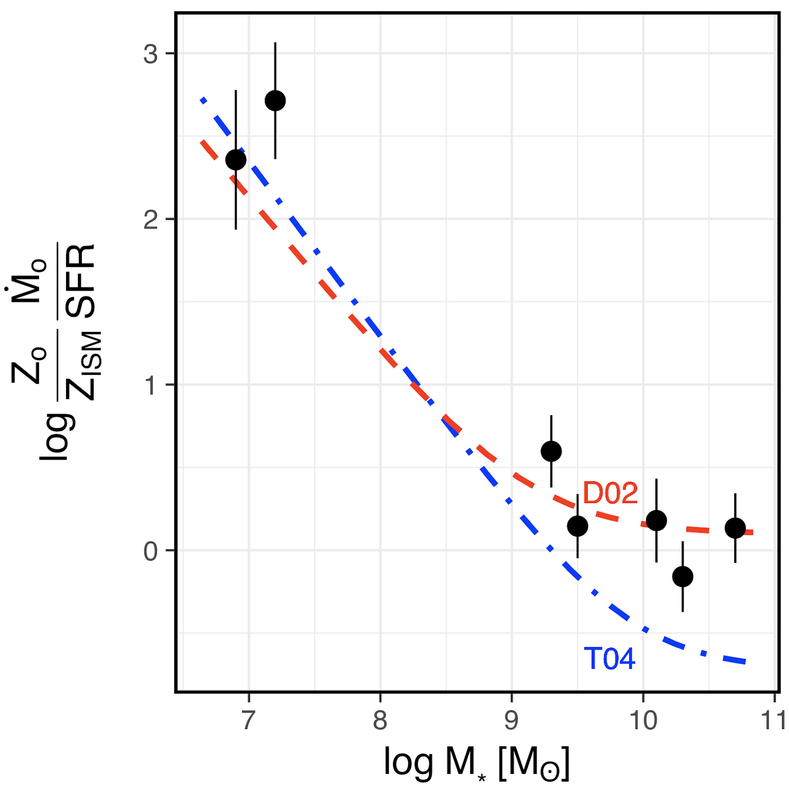
The metal-loading factor (y-axis) describes how efficiently outflows remove metals from galaxies relative to how efficiently star formation retains metals. The metal-loading factor strongly inversely scales with stellar mass. Over-plotted in red and blue are two theoretical curves of the metal-loading factors required to reproduce the mass-metallicity relationship from Denicolo et al. 2002 and Tremonti et al. 2004, respectively. The observed metal-loading factors agree in size and shape with the metal-loading factors required to produce the mass-metallicity relationships. Galactic outflows shape the mass-metallicity relationship.
|
Finally, the metal-loading factor is the ratio of the metal outflow rate to the metal retention rate through star formation. This measures how efficiently outflows remove metals from galaxies. The observed metal-loading factors strongly inversely scale with the stellar mass of the galaxy.
This efficiency directly shapes the MZR. Peeples et al. 2011 created analytic relationships for how the metal-loading factor should scale with stellar mass in order to reproduce observed MZRs. I over-plot two of their relationships onto our observed metal-loading factors and find that the observed metal-loading factors generally agree with the size and shape of the analytic relationships (specifically the Denicolo et al. 2002 relation). This suggests that galactic outflows shape the mass-metallicity relationship. |
